If you imagine a winter garden, you may picture snow-lined branches, evergreen shrubs, and rocks, but likely none of the bright-hued blooms of a summer garden. However, winter blooming perennials add color and excitement to an otherwise drab yard.
These hardy species come in a shocking variety when you think that most plants shrivel at the slightest frost.
Bulb-based plants like crocuses poke their way out of the snow, while other flowering plants like cyclamen or some shrubs also display vivid winter colors. Our list also includes a couple of potted plants that cheer up a home in the dead of winter.
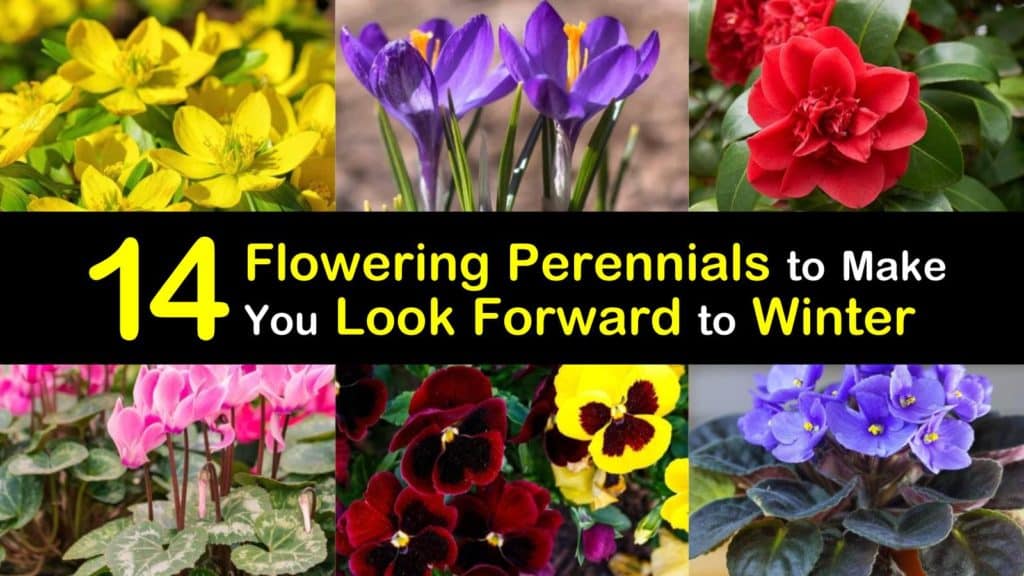
- Perennials that Flower in the Winter
- Where to Plant Winter Blooming Perennials
- When to Expect Blooms in the Winter
- Snow Crocus (Crocus chrysanthus)
- Ice Pansy (Viola hiemalis)
- Winter Jasmine (Jasminum nudiflorum) – A Vine-Like Perennial with Winter Blooms
- Florist's Cyclamen (Cyclamen persicum)
- Snowdrops (Galanthus nivalis)
- Witch Hazel (Hamamelis virginiana) – A Distinctive Perennial with Winter Blooms
- Christmas Rose (Helleborus niger)
- Lenten Rose (Helleborus x hybridus)
- Winter Aconite (Eranthis hyemalis) – A Cheerful Perennial with Winter Blooms
- African Violet (Saintpaulia ionantha)
- Cornelian Cherry Dogwood (Cornus mas)
- Camellia (Camellia japonica) – A Bold Perennial with Winter Blooms
- Winter Honeysuckle (Lonicera fragrantissima)
- Glory-of-the-Snow (Scilla forbesii)
Perennials that Flower in the Winter
You probably want to know where to site these amazing flowers that bloom every year and how to take care of them to ensure that you can best enjoy their color. Read on for tips to get the most from these winter bloomers.
Where to Plant Winter Blooming Perennials
Make sure to pick the best plants for your hardiness zone. Although warmer regions have the most options for winter blooming perennials, you’re sure to find a plant to suit your location. Don’t forget about cold-season herbs, grasses, and shrubs. A little variety adds a lot to enjoy throughout the season.
Because these flowers are likely the main point of interest in your garden during the winter, plant them somewhere easily visible.
Depending on the type of plant, winter-blooming shrubs and perennials look lovely in a bed or border, alongside a pathway, or in a rock garden or container.
When to Expect Blooms in the Winter
Some winter bloomers start in late winter, as the snow is melting, and continue flowering into early spring. Others, particularly in milder climates, bloom for the whole winter.
Some plants flower for only a few weeks, while others just keep on producing blossoms. Though both annuals and perennials bloom in the winter, we focus on perennials in this article.
Snow Crocus (Crocus chrysanthus)
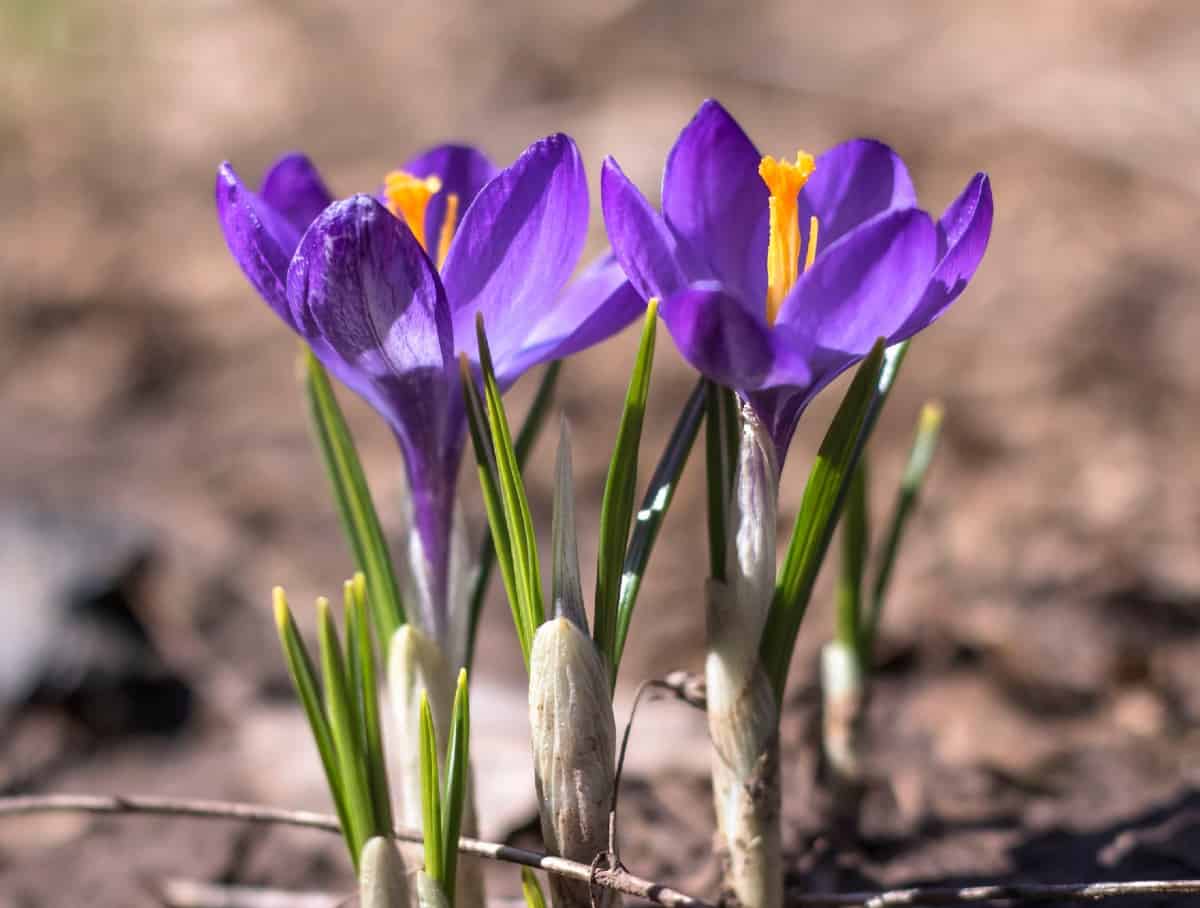
This charming plant pushes up through the snow in late winter and early spring, with often-bicolored petals and a yellow center. Crocuses look spectacular in sweeping drifts or lining a walkway.
Find a site with full or partial sun and average-quality, medium-moisture, well-drained soil. Water well after planting bulbs in the fall, and keep the soil moist throughout that season.

If you experience short springs with hot daytime temperatures, apply a balanced fertilizer in early fall. If your springs are longer and milder, feed your crocus plants after they bloom.
Ice Pansy (Viola hiemalis)
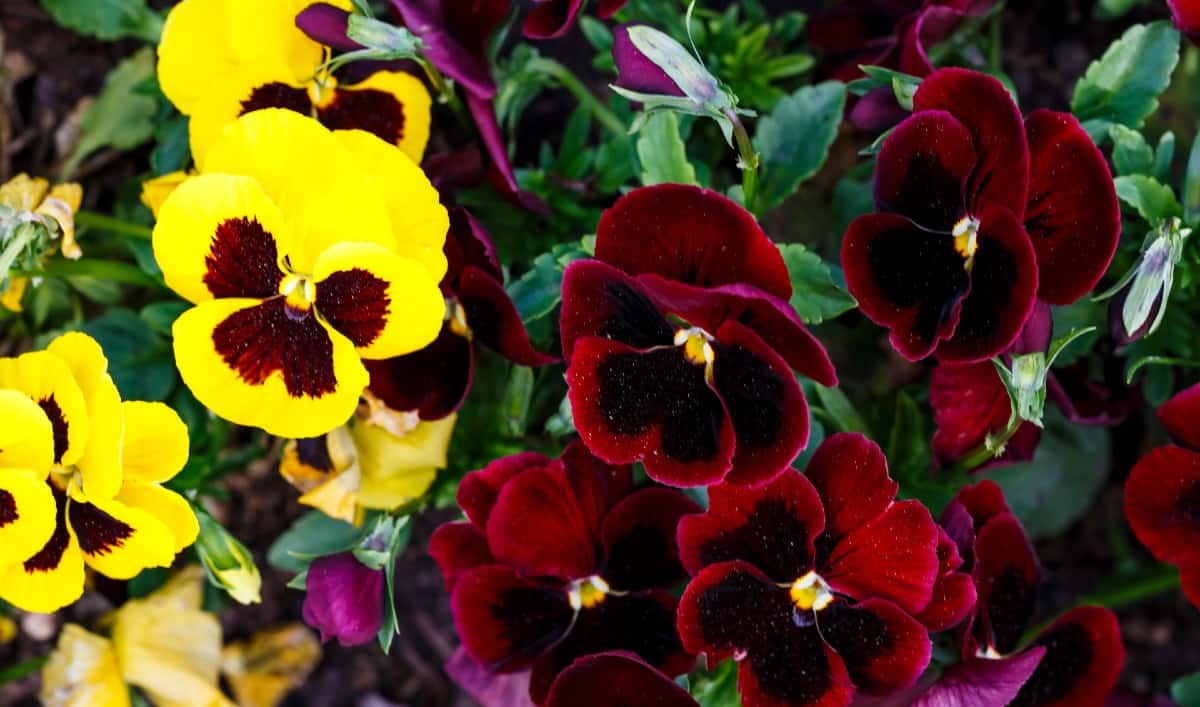
This low-lying perennial’s large, flat petals come in bright colors, with blue and white flowers the most cold tolerant. Pansies’ edible flowers often have face-like central markings.
Although this plant traditionally blooms in spring or early summer, it tolerates cold snaps in Mediterranean climates, and ice pansies tolerate light snow.
Grow pansies as an edging plant or in a container. They thrive in partial shade, or otherwise full sun, as well as in loose, fertile, well-drained, slightly acidic soil.
Sow pansy seeds very early in the spring or buy a plant from a nursery. They benefit from regular watering, a layer of mulch, and monthly foliar feeding.
Winter Jasmine (Jasminum nudiflorum) – A Vine-Like Perennial with Winter Blooms
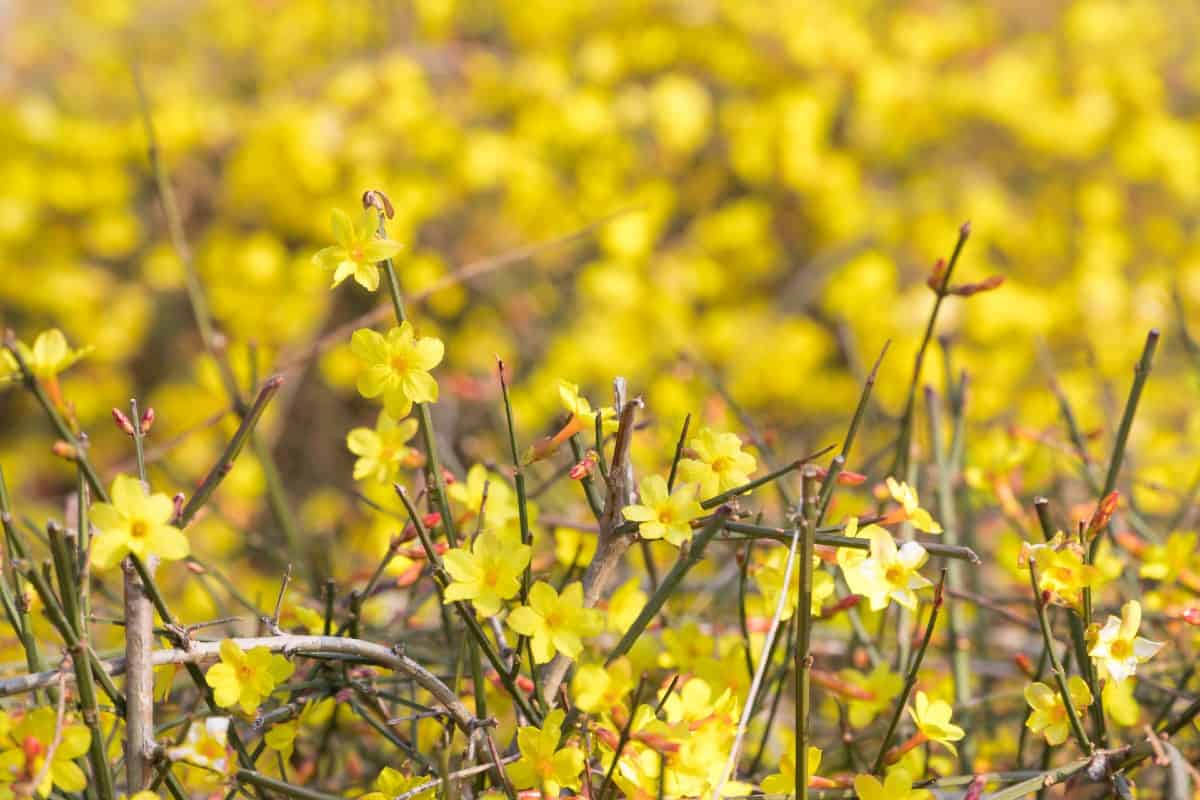
This vine-like shrub has branches that stay green in the winter and many yellow flowers in late winter through early spring. Its creeping branches grow as a groundcover or climb structures like arches.
Watch out since its stems put down roots wherever they touch the ground. Plant winter jasmine in full or partial sun and well-drained soil.
It needs regular watering—at least once a week—but no fertilizer, although a little compost encourages growth. Once your plant is established, you can cut off its young roots and plant them elsewhere.
Florist’s Cyclamen (Cyclamen persicum)
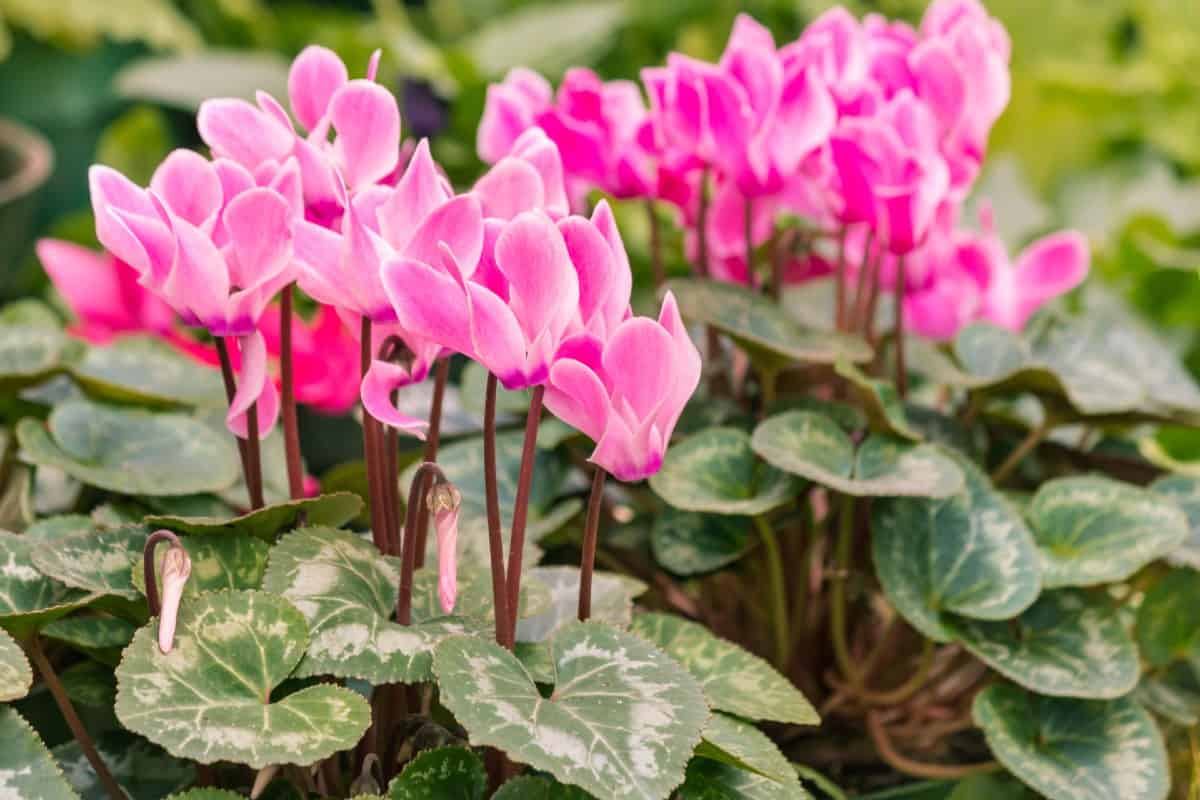
This beauty bears small, sweet-scented flowers in shades of pink, red, violet, or white. Its heart-shaped leaves often have silver marbling on top.
Grow as a houseplant to enjoy weeks of blooms in the fall and winter, although note that it’s toxic for cats and dogs. During the winter, cyclamen needs bright, indirect light, but it prefers cool darkness in the summertime.
It requires fertile, slightly acidic, well-drained soilless potting mix. When one inch of soil is dry, give your cyclamen plant’s base a little water.
Apply diluted liquid low-nitrogen fertilizer every other week. During cyclamen’s summer dormancy, do not give it water or fertilizer.
Snowdrops (Galanthus nivalis)
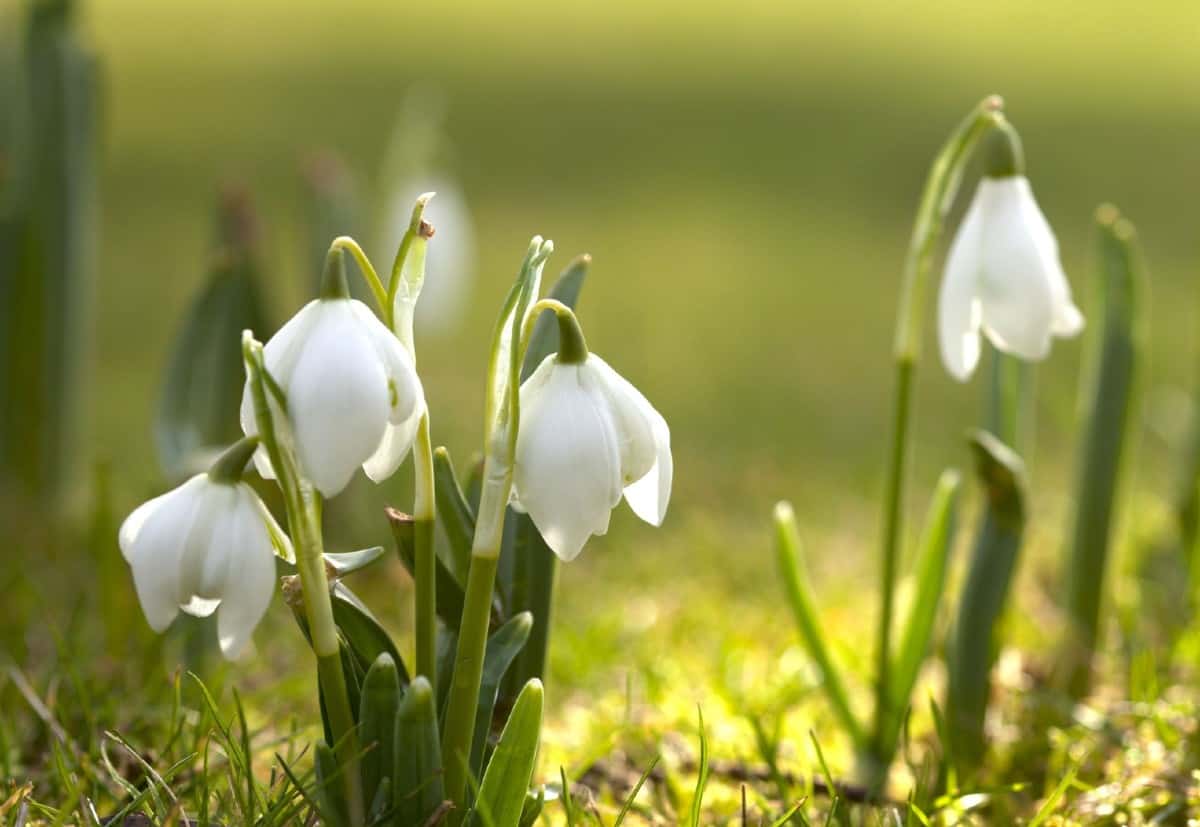
This hardy plant has narrow leaves and February or March blooms when there’s often still snow on the ground. It produces one small, drooping white flower per plant. This plant is poisonous for humans and other animals and can cause skin irritation.
Plant snowdrops in the fall in partial to full sun and well-drained, humus-rich soil. They shine in drifts or a rock, woodland, or moon garden. When planting, add compost and a 5-10-10 granular fertilizer. Water your plants well if you live in a warm climate. Otherwise, these are no-maintenance perennials.
Witch Hazel (Hamamelis virginiana) – A Distinctive Perennial with Winter Blooms
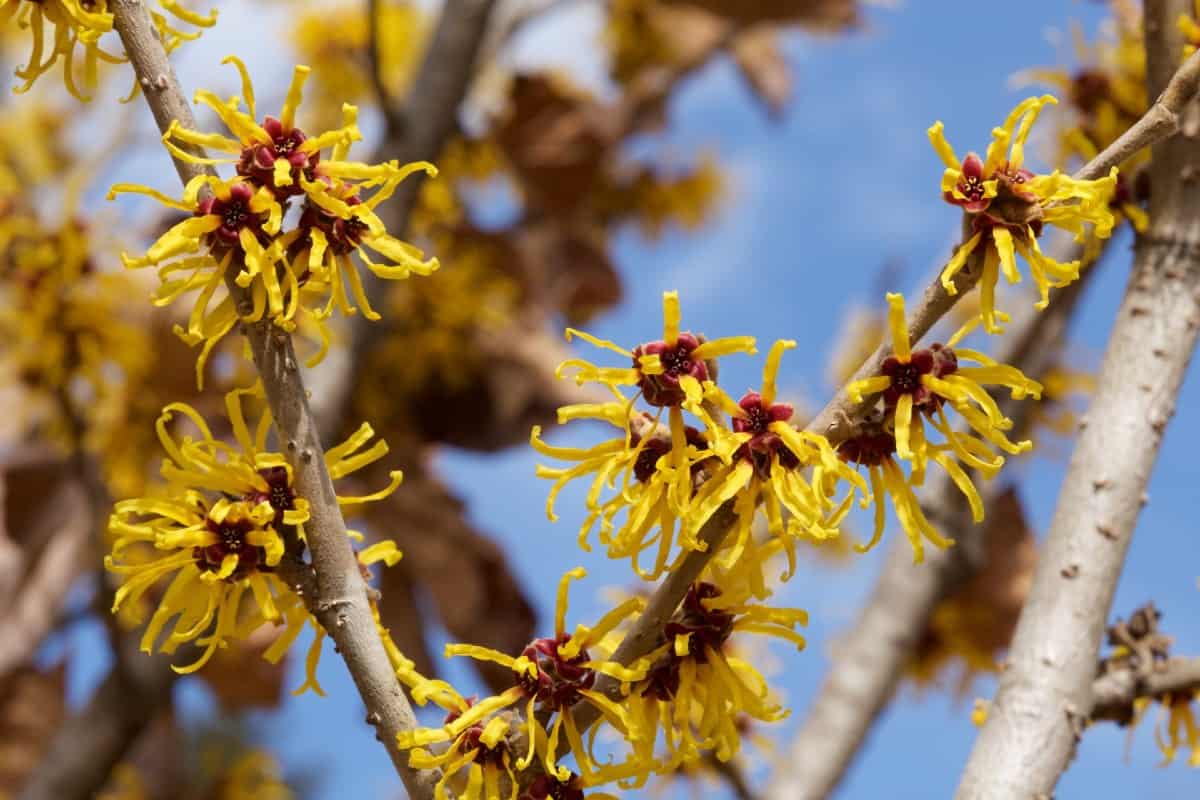
This shrub or small tree boasts fragrant, ribbon-like yellow flowers in January and February. Some people use witch hazel extract to treat insect bites, sunburn, and more. In any case, the plant is stunning in a border or as a specimen plant.
Propagate witch hazel using softwood cuttings in the spring. It prefers part shade or full sun and well-drained, acidic, or neutral, moist soil.
Water your plant regularly during its first growing season and dry spells, and give it fertilizer, compost, or manure every spring.
Christmas Rose (Helleborus niger)
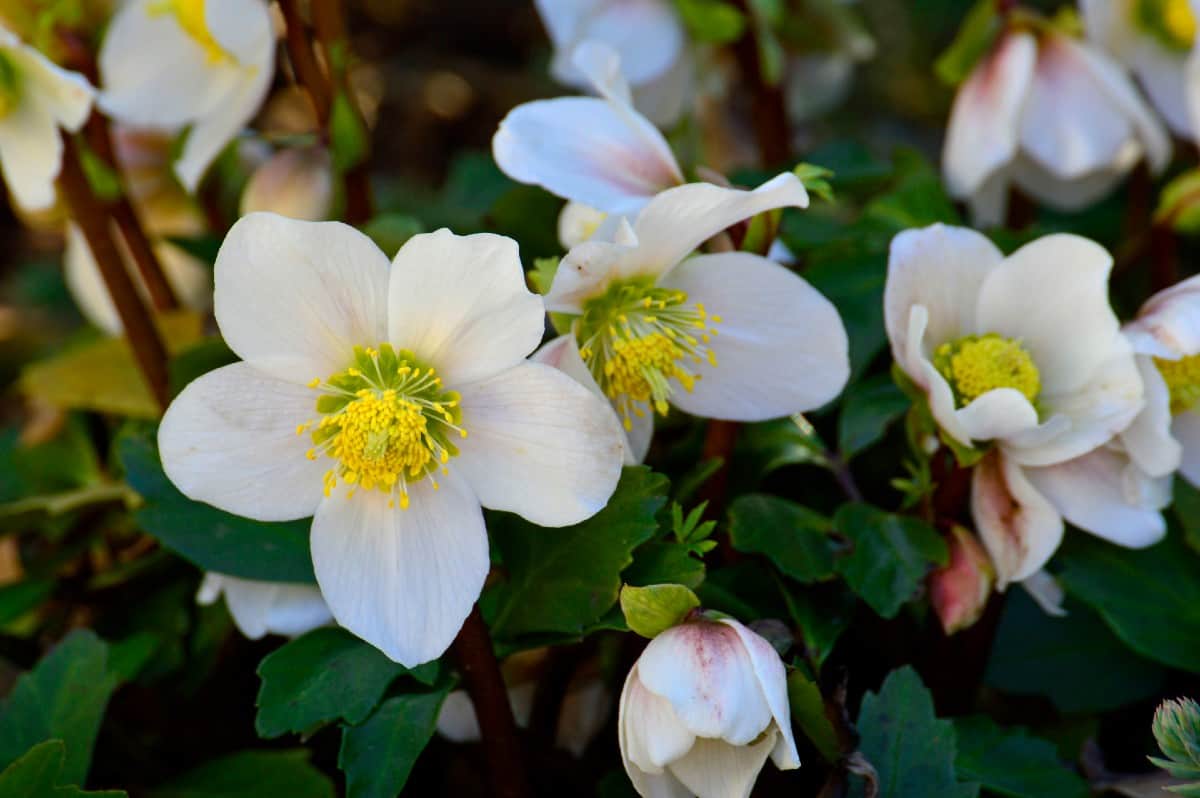
This evergreen boasts blue or dark green leaves and, sometime between November and February, flowers that range from white to light pink. It excels as a cut flower and when grown in a group.
Choose a site with full to partial sun for these easy perennials and make sure they have shelter from the wind. Sow Christmas rose seeds in the fall in loose, humus-rich soil. Give new plants compost, water, and a layer of mulch.
Water regularly in the early morning or evening and fertilize it between March and the end of August.
Lenten Rose (Helleborus x hybridus)
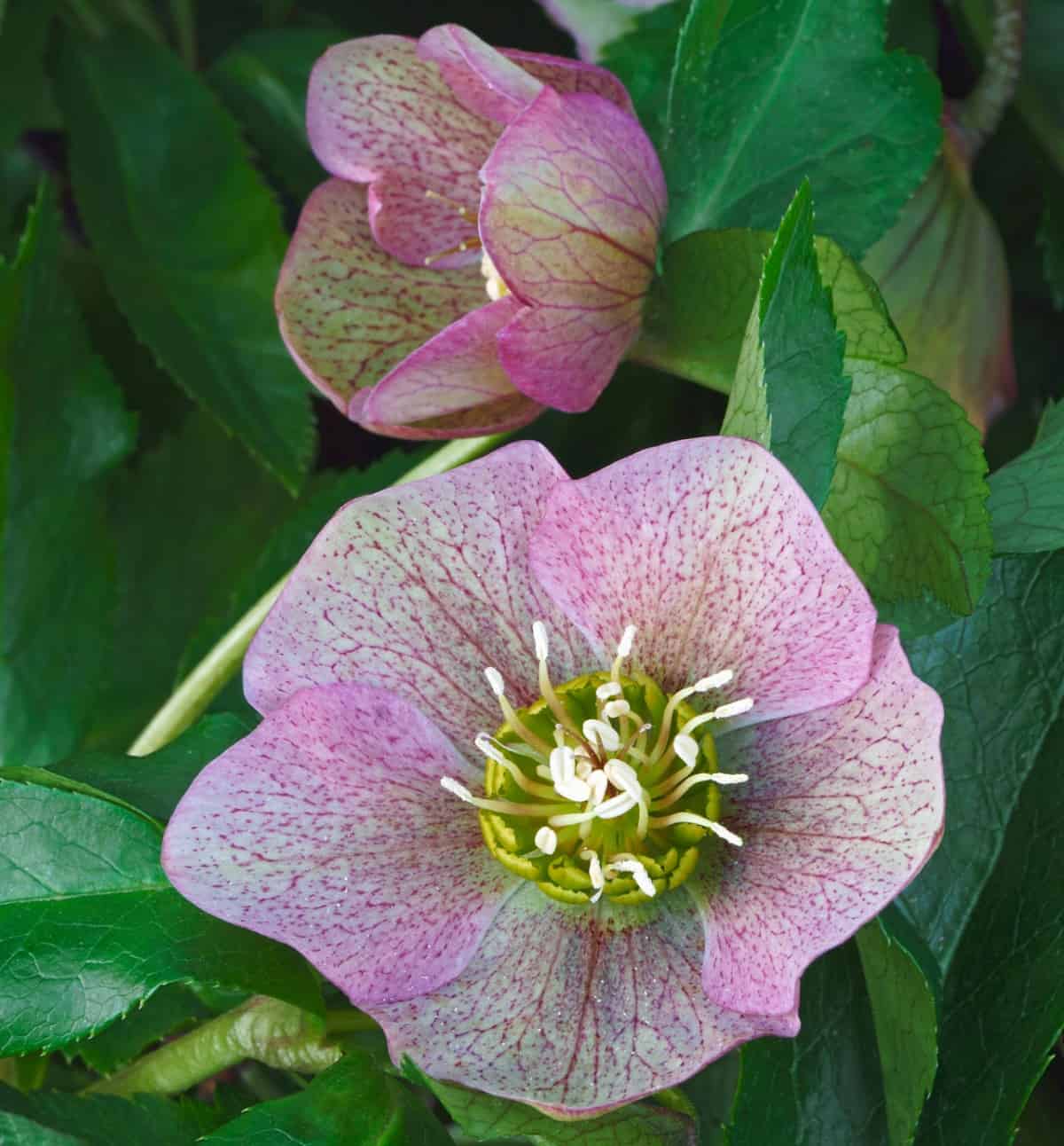
This perennial has leathery evergreen leaves and large, drooping flowers around Lent. The blooms can be various colors, including purple, red, and blue, potentially with different-colored markings. This plant is toxic and may cause skin irritation.
The Lenten rose works well in a woodland garden or under a deciduous tree. Plant it in early fall or late spring in partial shade and moist, fertile, well-drained soil. Propagate the Lenten rose using seeds or division, or let it self-sow.
Add compost and a layer of mulch for the winter. Give a larger hellebore plant balanced fertilizer in early spring. Though new plants demand moist soil, established plants are more drought tolerant.
Winter Aconite (Eranthis hyemalis) – A Cheerful Perennial with Winter Blooms
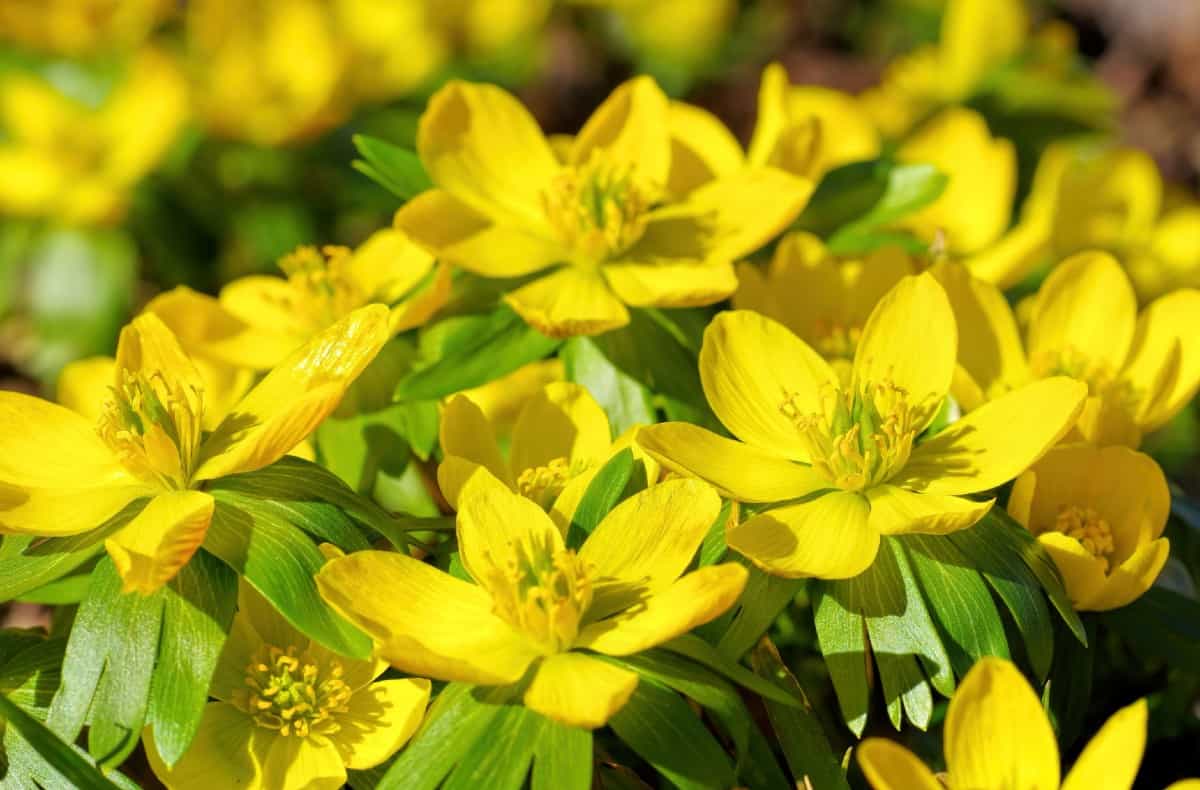
This plant grows in clumps of cup-shaped, bright yellow flowers that last all winter. It shines in beds and borders, alongside paths, or as a groundcover. Sow its seeds in a container in a cold frame in late spring, then plant your winter aconite in the fall.
Plant it in full or partial sun in moist, humus-rich, slightly alkaline, well-drained soil. In terms of watering, winter aconite needs consistent moisture. This plant also benefits from compost or manure in the spring.
African Violet (Saintpaulia ionantha)
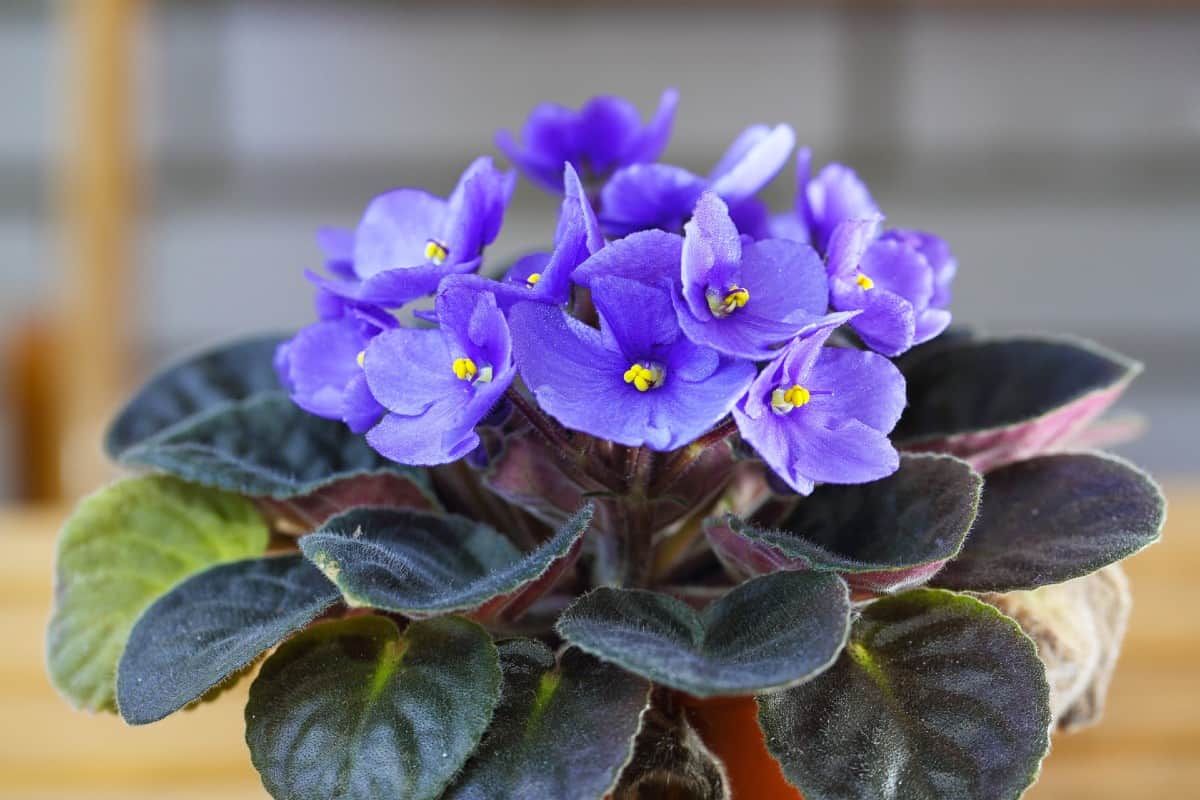
This fussy houseplant produces fuzzy leaves and frilly clusters of blue, pink, red, white, or purple flowers. It blooms continuously, even during the winter. Grow it in African violet soil mix or equal parts peat moss, vermiculite, and perlite.
The African violet flourishes in moderate to bright, indirect light. Rotate the pot regularly to ensure even growth.
Give the violet a little room temperature water at its base, allowing it to dry out between waterings. Every watering, apply quarter-strength African violet food or high-phosphorus fertilizer.
Cornelian Cherry Dogwood (Cornus mas)
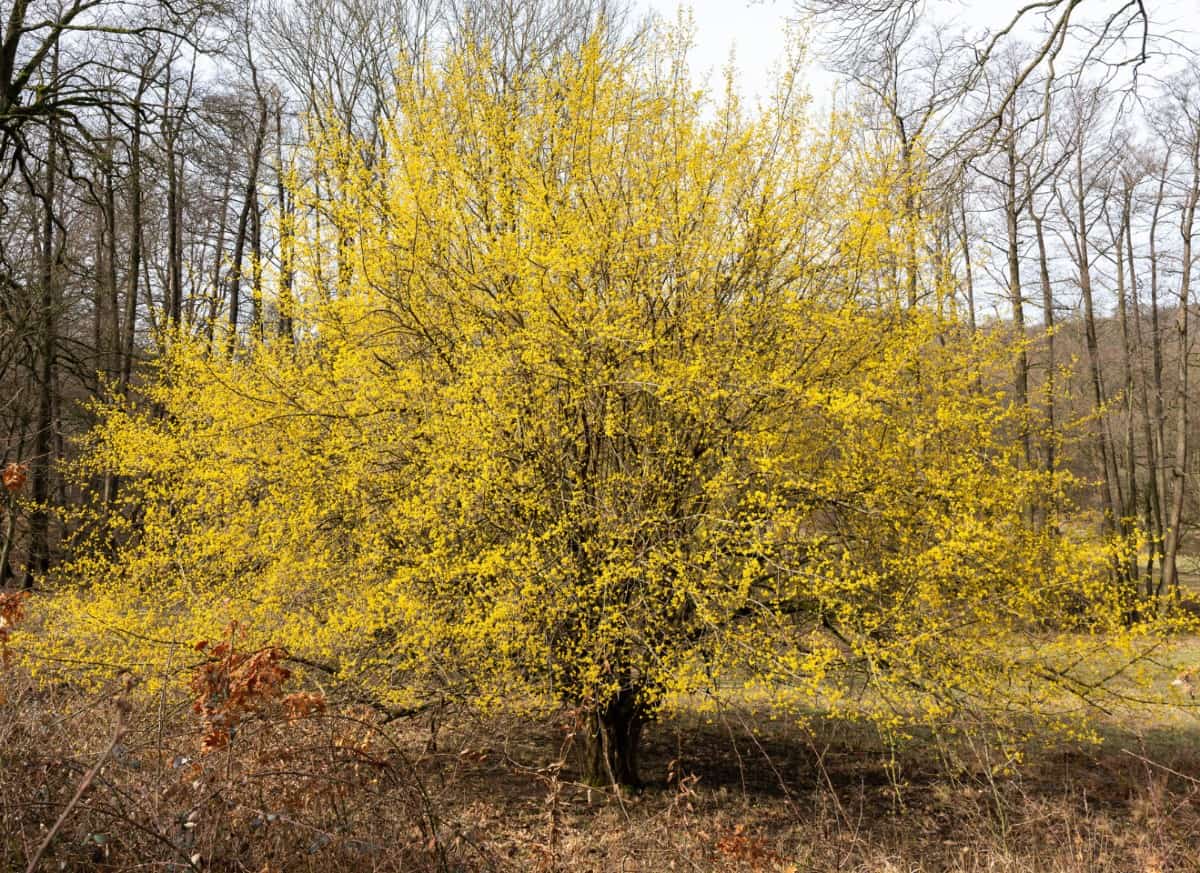
This shrub or small tree produces clusters of yellow flowers in late winter and early spring. The blossoms turn into edible red fruit that is popular with squirrels and birds. This dogwood’s bark peels and its green leaves may turn reddish-purple.
Propagate the Cornelian cherry using seeds, cuttings, or layering. It looks elegant as a plant screen, border, or hedge. This shrub requires full or partial sun and tolerates various soils, including clay, as long as they’re well-drained.
Water your Cornelian cherry weekly, or more often in extreme heat. Give a young plant granular fertilizer in late fall or early spring, or liquid fertilizer three times between late April and mid-July. Alternatively, use fertilizer spikes, following the instructions on the package.
Camellia (Camellia japonica) – A Bold Perennial with Winter Blooms
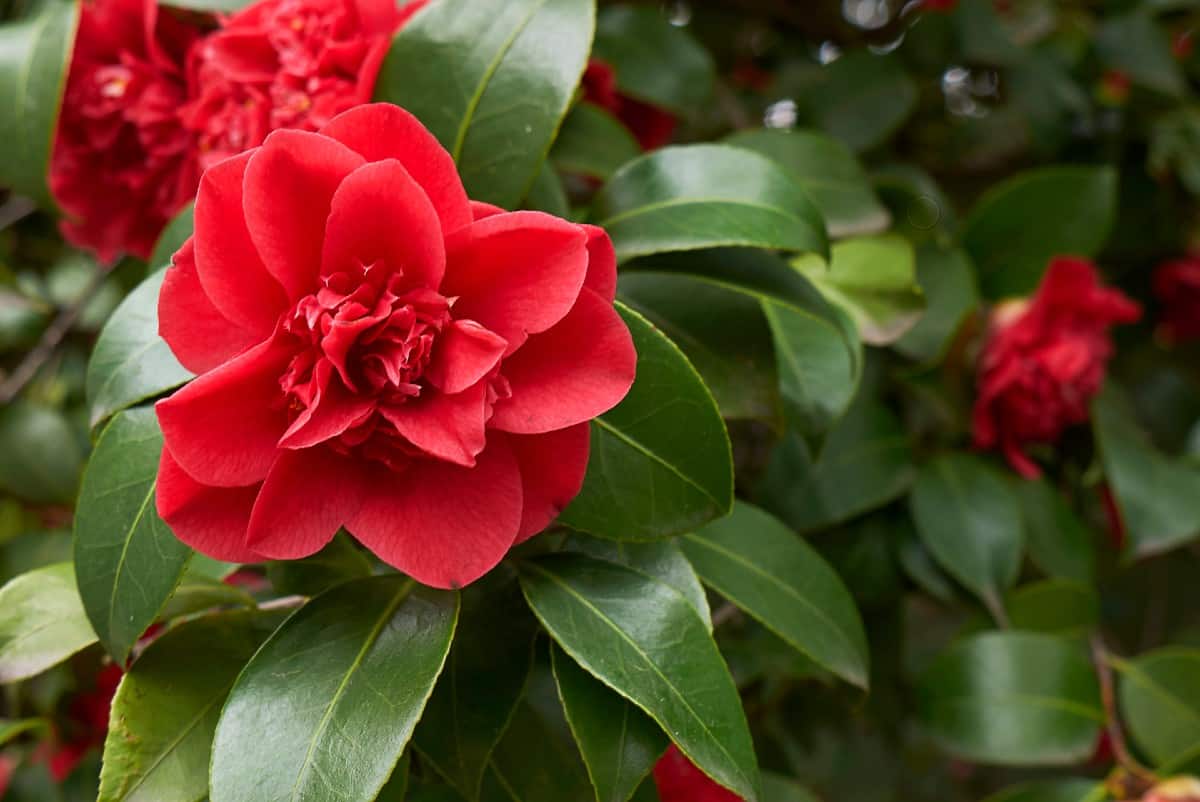
This slow-growing beauty boasts glossy evergreen leaves and, for three to four weeks in early spring, blooms in rich hues like white, pink, or red. Plant camellia in the spring as a specimen plant.
Light shade is ideal, as is acidic, fertile, moist, well-drained soil. This picky plant likes shelter from cold winds and strong sunlight.
Spread compost and mulch when planting. Camellia also benefits from a little balanced fertilizer for acid-loving plants once it’s done blooming. Though young camellia plants need frequent deep waterings, mature plants can survive on little water.
Winter Honeysuckle (Lonicera fragrantissima)
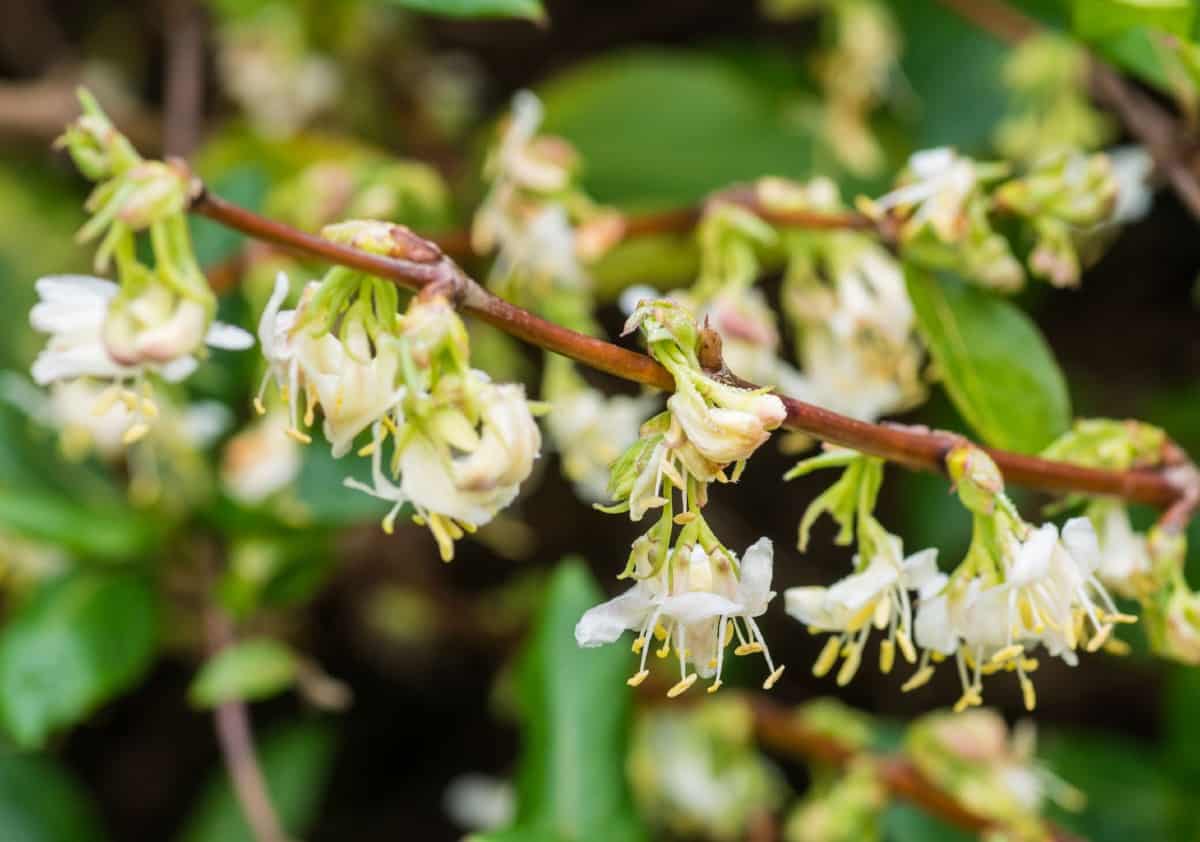
This highly fragrant perennial bears small, creamy white flowers in late winter and early spring. Its berries are popular with birds and mammals, which help the plant spread by distributing its seeds. The blossoms make excellent cut flowers and complement more colorful flowers.
Plant winter honeysuckle as a specimen plant or hedge, on a trellis, or in a shrub border. Grow it from seeds or cuttings, soaking the cuttings in water briefly. Winter honeysuckle thrives in full sun or partial shade.
This drought tolerant plant prefers soil that’s not too soggy. It appreciates receiving mulch and balanced granular fertilizer in the early spring.
Glory-of-the-Snow (Scilla forbesii)
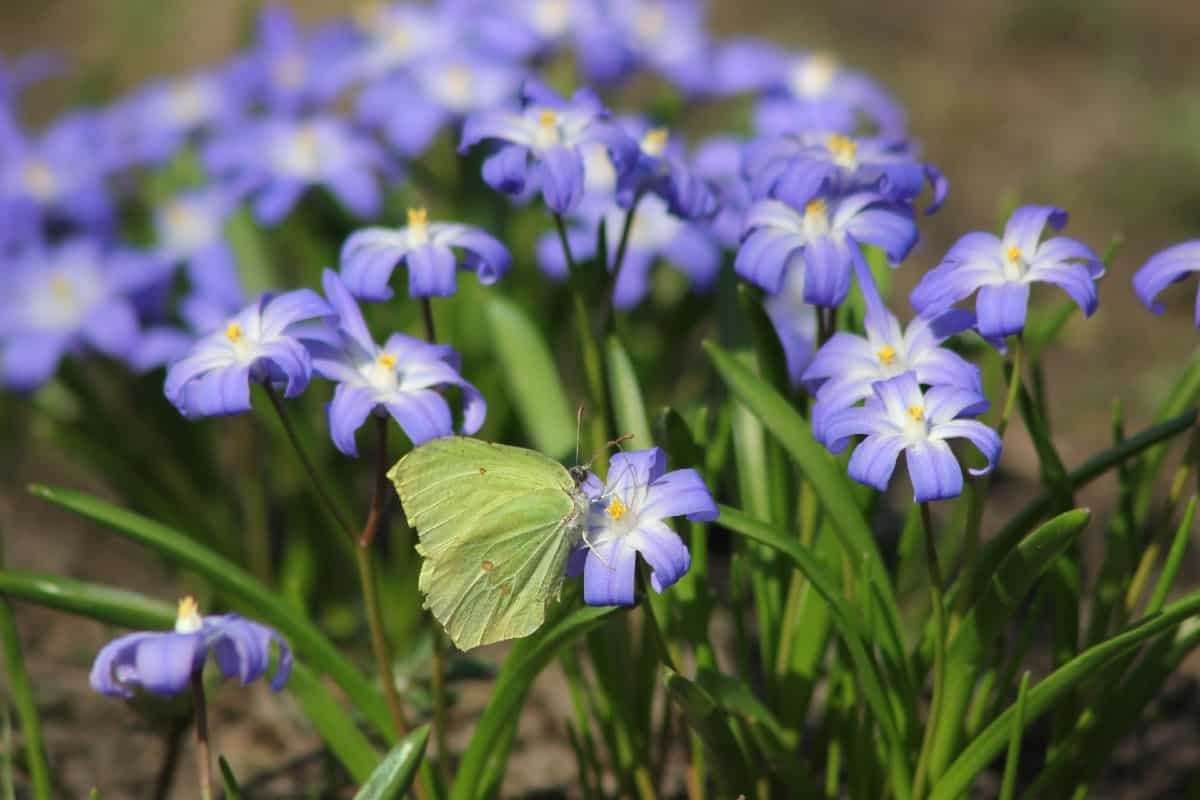
This lily family member is one of the first plants to appear in the spring, often poking its way through late-season snow. Its white-throated, star-shaped blue, white, or pink flowers look lovely in a container or rock garden or alongside a path.
Plant bulbs in the fall in full or partial sun and well-drained soil. Add compost if necessary to increase the soil’s fertility, and apply bulb fertilizer in the early spring. Water glory-of-the-snow only if the spring season is dry.
Though you may have resigned yourself to a garden that’s white, grey, and brown for several months of the year, it does not need to be that way. A winter garden can look as vibrant, in its own way, as a summer one.
A few carefully placed winter blooming perennials cheer up even the gloomiest day. Make guests ooh and aah at the yellows, pinks, and purples underlying the snow.
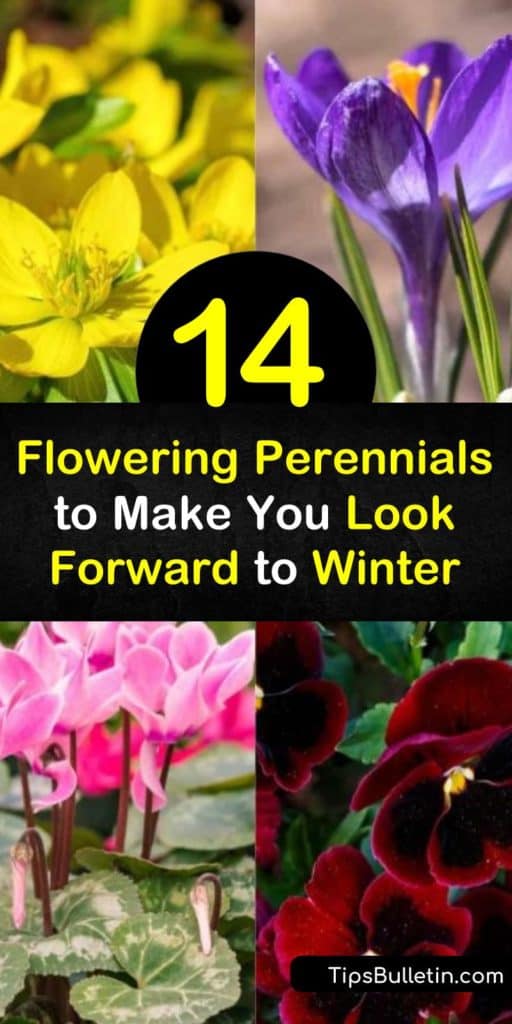
If you found this list of winter blooming perennials useful, please share these winter garden tips with your friends on Facebook and Pinterest.